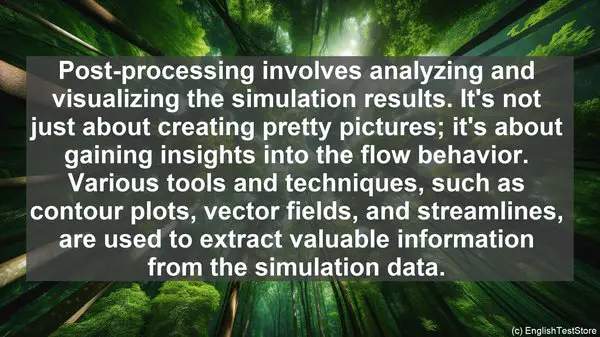Introduction
Welcome to today’s lesson. Computational Fluid Dynamics, or CFD, is a fascinating field that deals with the simulation and analysis of fluid flow. However, it’s not without its challenges. One of the most common hurdles in CFD is the confusion surrounding certain words. Today, we’ll shed light on these terms, demystifying them once and for all.
1. Accuracy vs. Precision
Accuracy and precision are often used interchangeably, but they have distinct meanings. Accuracy refers to how close a measurement is to the true value, while precision relates to the consistency and reproducibility of a measurement. In CFD, both are crucial. A simulation can be precise, yielding consistent results, but if it’s not accurate, those results may be far from reality.
2. Convection vs. Conduction
Convection and conduction are two modes of heat transfer. Convection involves the movement of fluid, transferring heat through bulk motion. On the other hand, conduction occurs when heat is transferred through direct contact between particles. Understanding the differences between these modes is essential for accurately modeling heat transfer in CFD simulations.
3. Laminar vs. Turbulent
Fluid flow can be categorized as either laminar or turbulent. Laminar flow is smooth and orderly, with layers of fluid moving parallel to each other. Turbulent flow, on the other hand, is chaotic, characterized by eddies and vortices. Determining the flow regime is crucial, as it affects various aspects, such as drag, heat transfer, and mixing.
4. Viscosity vs. Density
Viscosity and density are both properties of fluids, but they have different implications. Viscosity relates to a fluid’s resistance to flow, while density refers to its mass per unit volume. In CFD, viscosity plays a significant role in determining the flow behavior. High viscosity fluids, like honey, flow differently than low viscosity fluids, like water.

5. Eulerian vs. Lagrangian
Eulerian and Lagrangian are two approaches used in CFD simulations. In the Eulerian approach, the fluid is divided into a grid, and properties, such as velocity and pressure, are solved at each grid point. In the Lagrangian approach, individual fluid particles are tracked, and their properties are analyzed. Each approach has its advantages and is suited for different scenarios.
6. Incompressible vs. Compressible
Incompressible and compressible flow refer to how a fluid’s density changes under different conditions. In incompressible flow, the density remains constant, while in compressible flow, it can vary significantly. Understanding whether a flow is compressible or not is crucial for accurate simulations, especially when dealing with high-speed flows or those involving gases.
7. Boundary Layer
The boundary layer is a thin region near a solid surface where the fluid’s velocity transitions from zero at the surface to the free stream velocity. It plays a vital role in determining the drag experienced by an object. Properly resolving the boundary layer is crucial for accurate drag predictions and overall flow analysis.
8. Meshing
Meshing is the process of dividing the computational domain into small, interconnected elements. The quality of the mesh has a direct impact on the simulation’s accuracy and computational efficiency. A well-structured mesh, with appropriate element sizes and connectivity, is essential for obtaining reliable results.

9. Solver
The solver is the heart of a CFD simulation. It’s responsible for solving the governing equations, such as the Navier-Stokes equations, and obtaining the flow field. Different solvers have varying levels of accuracy, robustness, and computational requirements. Choosing the right solver for a specific problem is crucial for obtaining reliable results within a reasonable timeframe.
10. Post-processing
Post-processing involves analyzing and visualizing the simulation results. It’s not just about creating pretty pictures; it’s about gaining insights into the flow behavior. Various tools and techniques, such as contour plots, vector fields, and streamlines, are used to extract valuable information from the simulation data.
